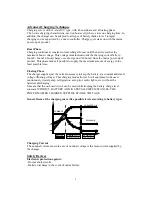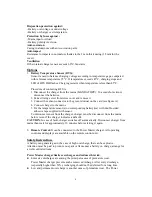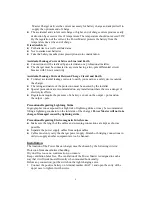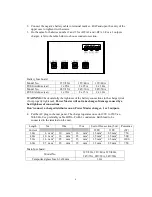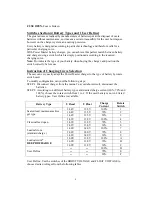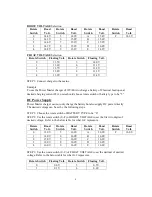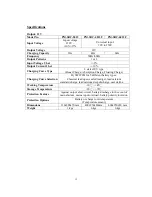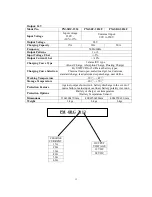
4
Disjonction protection against:
- Battery overvoltage or undervoltage
- Battery or charger overtemperature
Protection by fuses against :
- Mains input overload
- Battery polarity inversion
Anti-corrosion
Casing in aluminum with anti-corrosion paint.
Anti-impact
Resistance to impacts in normal use thanks to the 2 mm-thick casing (1,5mm for the
cover).
Ventilation
If the internal charger sensor exceeds 60°C, fan starts
Options
1.
Battery Temperature Sensor (BTS):
Sensor is used to balance charging voltage according to temperature gaps, compared
with reference temperature 25°C. If temperature exceeds 45°C, charging stops and
LED of BTS OH flashes. Charging restarts when temperature is less than 45°C.
Procedure of connecting BTS is:
1. Disconnect the charger from the mains (MANDATORY). To avoid short-circuit,
disconnect the batteries.
2. Extract fixing screw from wires cover and remove it
3. Connect the sensor connector to the green terminal on the card (see figure A)
4. Connect charger to the mains
5. Fix the temperature sensor(s) on corresponding battery(ies) with double-sided
adhesive tape supplied with sensor.
To disconnect sensor from the charger, charger must be disconnect from the mains
before (even if the charger indicates a default).
CAUTION:
In case of fault, charger switches off automatically. Disconnect charger from
mains then wait for approximately 10 minutes before starting it again.
2.
Remote Control:
It can be connected to the Power Master charger. All operating
controls and displays are available on the remote control unit.
Safety Instruction
A battery can generate gas in the case of high overcharge, that can be explosive.
Attention must be paid to produce no spark or flame near a battery on charge, arrange for
a well-ventilated room.
Power Master charger limits overcharges and reduces this risk.
z
Excessive discharges are among the principal causes of premature wear.
Power Master charger prevents such excessive discharge. After every discharge,
(especially higher than 50%), recharging should not be deferred for a long time.
z
Low and permanent overcharge is another cause of premature wear. The Power




